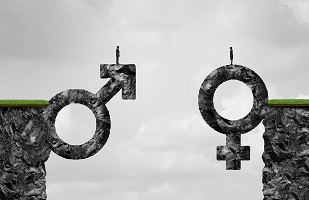 Women reportedly earn $0.79 for every $1.00 men earn. While the pay gap has gotten a lot of attention recently, there’s another gap that’s also troubling: the paycheck protection gap. Women have a greater need for paycheck protection. At the same time, they are less likely to have coverage. This puts women, especially working single women, at great risk.
Women reportedly earn $0.79 for every $1.00 men earn. While the pay gap has gotten a lot of attention recently, there’s another gap that’s also troubling: the paycheck protection gap. Women have a greater need for paycheck protection. At the same time, they are less likely to have coverage. This puts women, especially working single women, at great risk.
Everyone needs paycheck protection.
No matter how much or how little people earn, they depend on their paycheck to survive. A survey from CareerBuilder revealed that 78 percent of U.S. workers are living paycheck to paycheck. This means that the majority of workers cannot afford to miss a paycheck.
A disability can prevent people from working, however. And while the Family and Medical Leave Act (FLMA) gives eligible employees the right to take time off for qualifying reasons without losing their job, it does not guarantee pay during this time. The loss of income can be devastating.
And it’s not a rare problem, either. According to the Social Security Administration, one in four of today’s 20-year-olds will experience a disability during their working years.
But women have a greater need.
Both men and women are at risk for disability, and both men and women can struggle when dealing with a loss of income. However, for women, the situation is even more serious.
According to a three-year study conducted by the Council for Disability Awareness (CDA), women are more likely to experience short- and long-term disability compared to men.
Looking at the most common causes of disability claims, this isn’t too surprising. Pregnancies account for 9.4 percent of long-term disability claims. That’s nearly one in 10. The short-term disability statistics are even more concerning. Pregnancy accounts for a full 25 percent of short-term disability claims. That one in four. Since most Americans are living paycheck to paycheck, even a short-term disability can cause serious financial problems.
Women aren’t prepared.
Women have a higher risk, but it doesn’t necessarily follow that they’re more prepared. According to the CDA, only 20 percent of women are extremely confident that they could support their household during income loss, while 37 percent are not at all confident. More than half of single working women have no disability insurance. Among women without coverage, many say it’s because they’ve never thought about coverage.
It wasn’t that long ago that men were assumed to be a family’s primary source of income. Now, many women work. A poll from NBC News and Wall Street Journal found that 49 percent of working women are their family’s main breadwinner. At the same time, many women say they’re not treated as equals in the workplace.
You can help close the gap.
Women are supporting their families, but a disability could prevent them from doing so. It’s time to close the paycheck protection gap and get them the coverage they need. Download our DI for Women Prospecting Letter and Fact Sheet to get started.
